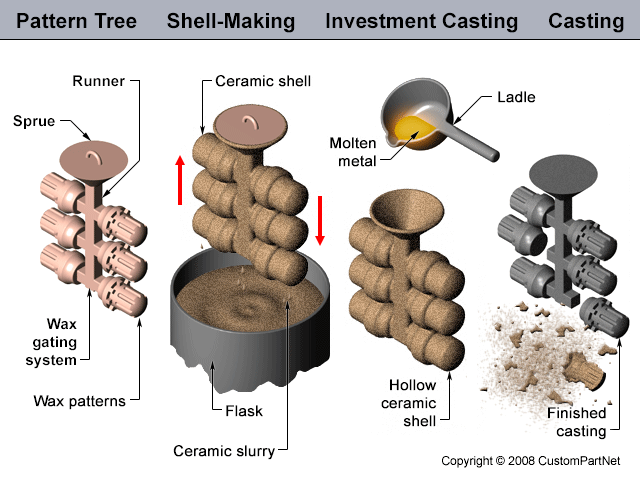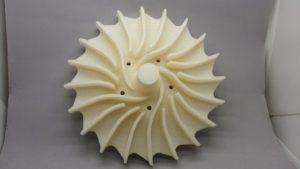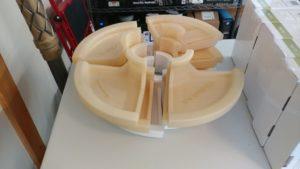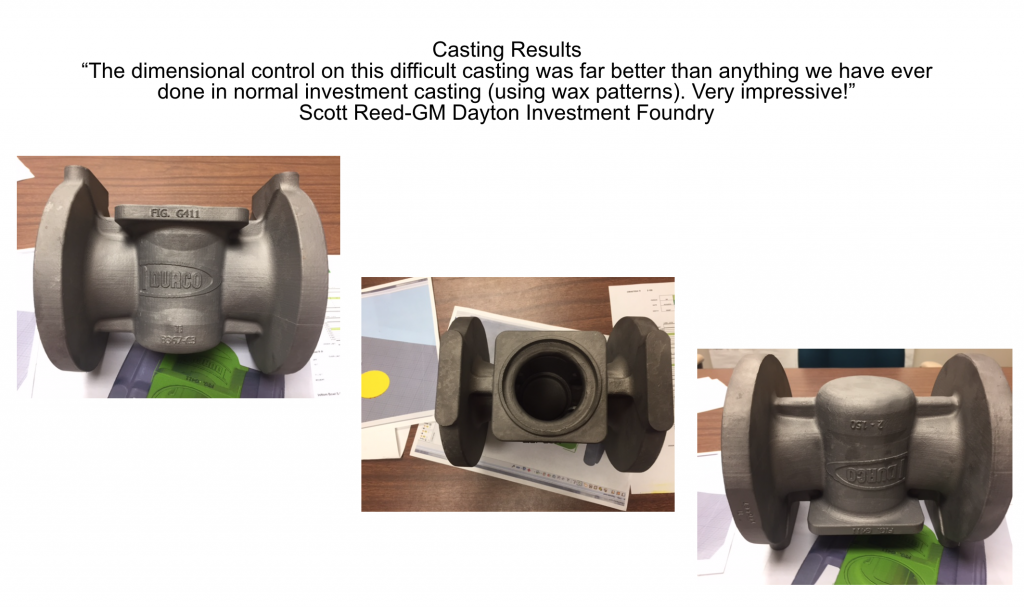 Not only is 3D printing a wonderful, versatile method of fabrication on its own, but it’s also turned out to play an important role alongside other, much older techniques in many cases. Investment casting is one of the oldest manufacturing methods in existence, and although it was first used thousands of years ago, it’s still a common, useful method of creating metal pieces today. 3D printing has complemented it well, proving that even reliable, time-tested techniques can benefit from new technology.
Not only is 3D printing a wonderful, versatile method of fabrication on its own, but it’s also turned out to play an important role alongside other, much older techniques in many cases. Investment casting is one of the oldest manufacturing methods in existence, and although it was first used thousands of years ago, it’s still a common, useful method of creating metal pieces today. 3D printing has complemented it well, proving that even reliable, time-tested techniques can benefit from new technology.
Also known as lost-wax casting, investment casting involves the creation of a wax model, or pattern, in the shape of the final part. It’s then coated in ceramic and placed into an oven, where high temperatures burn away the wax, leaving a ceramic mold behind. Molten metal is then poured into the mold and allowed to harden, creating the final part.
3D printing has become a popular way to fabricate the initial model, especially in the creation of jewelry. Certain 3D printer manufacturers, such as Formlabs, have created wax and resin materials specifically for casting, but good old PLA can do the trick as well. Jerry LePore, CEO of Spectra3D Technologies, can vouch for that. LePore joined Spectra3D in January of this year, two years after he began working with 3D printing. The Asheville, North Carolina-based company began as a 3D printer reseller, and this summer started offering 3D printing services as well. One of their early customers was Flowserve, a global supplier of pumps, seals, valves and other engineering solutions.
 Flowserve asked Spectra3D to print patterns for the investment casting of parts including valve bodies, ball valves, pump housings, and impellers. LePore, already a big fan of colorFabb materials, figured that their PLA would be perfect for the job.
Flowserve asked Spectra3D to print patterns for the investment casting of parts including valve bodies, ball valves, pump housings, and impellers. LePore, already a big fan of colorFabb materials, figured that their PLA would be perfect for the job.
“We chose Colorafab natural PLA because it contains no color pigments, prints great and burns out really clean from the mold,” he said. “Currently we are going through 25 +/- rolls a month of Colorfabb Natural.”
The colorFabb materials are supplied to Spectra3D by Printed Solid, a distributor based in Newark, Delaware. Once Spectra3D prints the patterns, they are sent to Flowserve, which fills them with molten titanium, stainless steel and other metals. Using 3D printing to create the patterns saves time and money – PLA is an inexpensive alternative to wax, and 3D printing allows a design flexibility that’s difficult to achieve with other methods of fabrication.
“I started using colorfabb filament early 2015 and havent turned back since,” LePore said. “We believe in using high quality filament for our clients’ needs. We have used all of colorFabb’s filaments across the board.”
colorFabb’s PLA/PHA material was developed four years ago by combining polyhydroxyalkanoate (PHA), a biopolymer, to PLA to create a tougher, less brittle version of the filament. The company offers a wide variety of colors – solids, translucents, metallics, and transparent shades, from classic primary colors to highly specific shades such as “blueish white” and “greenish beige,” as well as, of course, the Natural version which worked so well for this particular application.
LePore used the industrial STACKER S4 3D printer, which he calls his “pride and joy,” for the large casting patterns. Also in his repertoire are several MakerBot printers as well as CraftBots, a CreatorBot 3D Pro, a Fusion3 F306, and a uPrint SE Plus. Discuss in the Investment Casting forum at 3DPB.com. [Source/Images: colorFabb]
Subscribe to Our Email Newsletter
Stay up-to-date on all the latest news from the 3D printing industry and receive information and offers from third party vendors.
You May Also Like
Polls of the Week: Are 3D Printed Guns a Threat and Should We Regulate Them?
One of the most controversial topics in the 3D printing industry, hands-down, is guns. It’s been a major point of contention for years, and people typically have very strong opinions...
3D Printing News Briefs, April 3, 2024: Kickstarter FDM 3D Printer, Artificial Eyes, & More
In 3D Printing News Briefs today, we’re talking about an FDM 3D printer on Kickstarter, advancements in artificial eye creation, and 3D printed solenoids for electromagnets. Then we’ll move on...
Daring AM: The Global Crackdown on 3D Printed Firearms Continues
In the last few years, a surge in police raids uncovering 3D printed guns has led to concerns about their growing association with criminal gangs. Although typically seen as inferior...
Daring AM: Canada Tackles Increase of 3D Printed Gun Arrests and Sentences
Recent incidents in Canada have brought to light the arrest of individuals for possessing illegal 3D printed firearms, among other charges. These incidents, which resulted in multiple arrests, serve as...





































